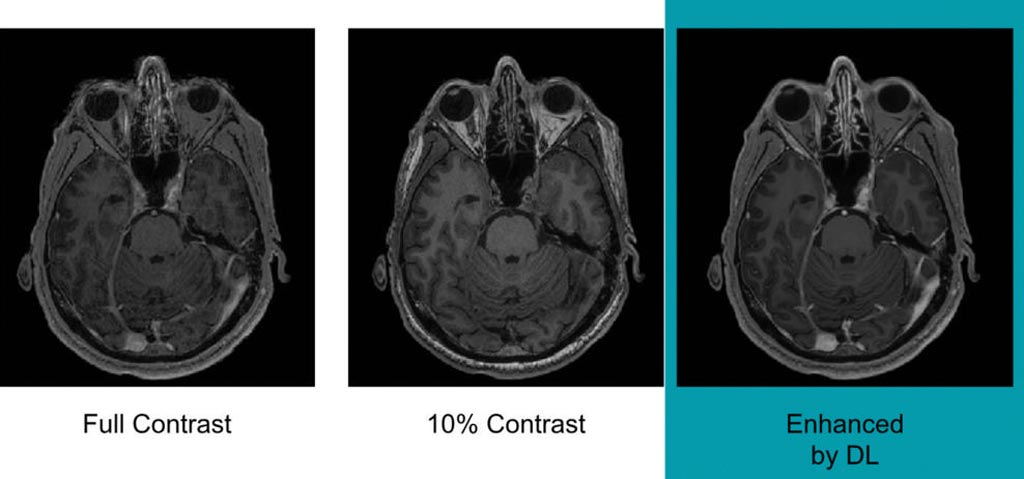Artificial Intelligence Could Help Reduce Gadolinium Dose in MRI
By MedImaging International staff writers
Posted on 18 Dec 2018
Researchers from Stanford University (Stanford, CA, USA) are using artificial intelligence (AI) to reduce the dose of a contrast agent that may be left behind in the body after MRI exams.Posted on 18 Dec 2018
Gadolinium is a heavy metal used in contrast material that enhances MRI images. Recent studies have found that trace amounts of the metal remain in the bodies of people who have undergone exams with certain types of gadolinium. The effects of this deposition are not yet known, although radiologists are working to optimize patient safety while simultaneously preserving the important information provided by gadolinium-enhanced MRI scans. The Stanford researchers have been doing this by studying deep learning, a sophisticated AI technique that teaches computers by examples. By using models called convolutional neural networks, computers can recognize images as well as find subtle distinctions among the imaging data that a human observer might be incapable of discerning.

Image: Example of full-dose, 10 percent low-dose and algorithm-enhanced low-dose (Photo courtesy of RSNA).
In order to train the deep learning algorithm, the researchers used MR images from 200 patients who had received contrast-enhanced MRI exams for various indications. They collected three sets of images for each patient: pre-contrast scans, done prior to contrast administration and referred to as the zero-dose scans; low-dose scans, acquired after 10% of the standard gadolinium dose administration; and full-dose scans, acquired after 100% dose administration. The algorithm learned to approximate the full-dose scans from the zero-dose and low-dose images. Neuroradiologists then evaluated the images for contrast enhancement and overall quality.
The results showed that the image quality was not significantly different between the low-dose, algorithm-enhanced MR images and the full-dose, contrast-enhanced MR images. The initial results also demonstrated the potential for creating the equivalent of full-dose, contrast-enhanced MR images without any contrast agent use. These findings suggest the method’s potential for dramatically reducing gadolinium dose without sacrificing diagnostic quality. Future research in the clinical setting will focus on evaluation of the algorithm across a broader range of MRI scanners and with different types of contrast agents.
“Low-dose gadolinium images yield significant untapped clinically useful information that is accessible now by using deep learning and AI,” said study lead author Enhao Gong, Ph.D., researcher at Stanford University. “We’re not trying to replace existing imaging technology. We’re trying to improve it and generate more value from the existing information while looking out for the safety of our patients.”
Related Links:
Stanford University














